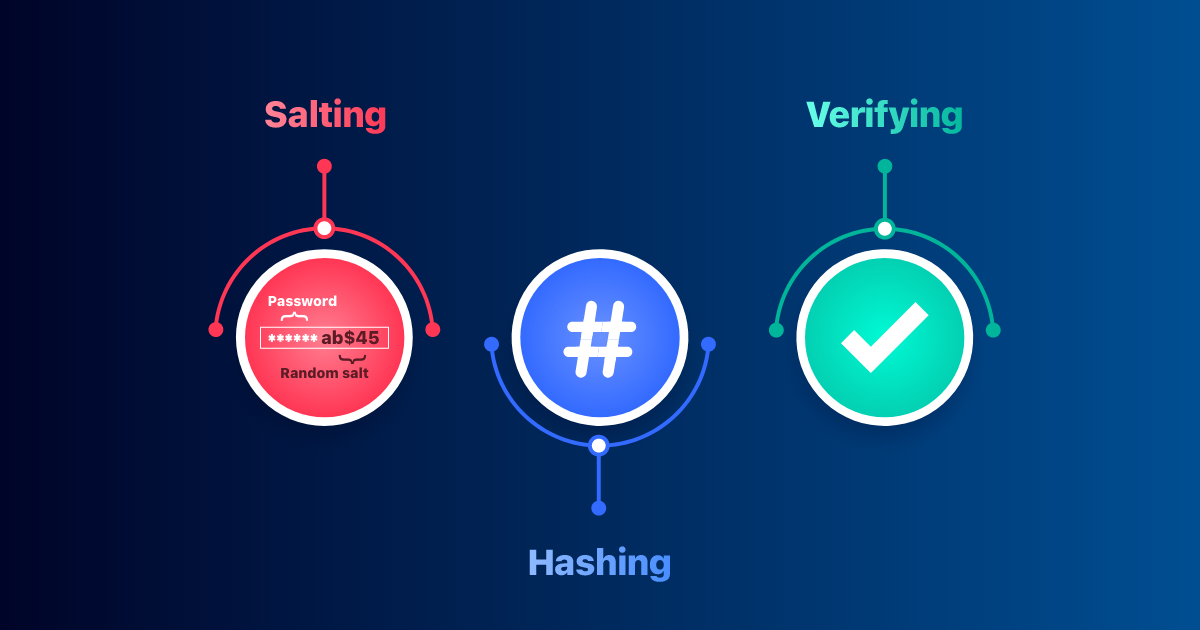Introduction
In the world of cybersecurity, password storage is a critical aspect of protecting user data. One of the oldest and most common methods of securing passwords is hashing—a process that converts plaintext passwords into irreversible strings of characters. However, not all hashing algorithms are created equal. Some, like MD5 (Message Digest Algorithm 5) and SHA1 (Secure Hash Algorithm 1), were once considered secure but are now dangerously outdated.
Despite their widespread historical use, these algorithms are now easily crackable, making them a significant security risk. This blog will explore why MD5 and SHA1 are weak, how attackers exploit them, and what modern alternatives should be used instead.
What Are Hashing Algorithms?
Before diving into the weaknesses of MD5 and SHA1, it’s essential to understand what hashing is and why it’s used for password storage.
Definition of Hashing
Hashing is a one-way cryptographic function that takes an input (like a password) and produces a fixed-size string of characters, which appears random. Unlike encryption, hashing is not reversible—meaning you cannot retrieve the original input from the hash.
Purpose of Hashing in Security
- Password Storage: Instead of storing plaintext passwords, systems store their hashes.
- Data Integrity: Hashes verify that files or messages haven’t been altered.
- Digital Signatures: Used in certificates to ensure authenticity.
However, not all hashing algorithms are secure, especially older ones like MD5 and SHA1.
MD5 (Message Digest Algorithm 5) – A Broken Algorithm
History of MD5
Developed in 1991 by Ronald Rivest, MD5 was designed to generate a 128-bit hash value. It was widely used for checksums, password storage, and file integrity verification.
Why MD5 Is Considered Weak
- Vulnerable to Collision Attacks
- A collision attack occurs when two different inputs produce the same hash.
- In 2004, researchers demonstrated practical MD5 collisions, breaking its security.
- Fast Computation
- Modern GPUs can compute billions of MD5 hashes per second, making brute-force attacks easy.
- Rainbow Table Attacks
- Precomputed tables of hashes allow attackers to reverse hashes quickly.
- No Salting in Original Design
- Without a salt (random data added before hashing), identical passwords produce identical hashes, making attacks easier.
Real-World Exploits of MD5
- Flame Malware (2012): Exploited MD5 collisions to forge Microsoft digital certificates.
- Password Cracking: Tools like John the Ripper and Hashcat can crack MD5 hashes in seconds.
SHA1 (Secure Hash Algorithm 1) – No Longer Secure
History of SHA1
SHA1, introduced in 1995 by the NSA, was designed as a stronger alternative to MD5, producing a 160-bit hash. It was widely used in SSL certificates, Git version control, and password storage.
Why SHA1 Is Now Insecure
- Collision Vulnerabilities
- In 2005, researchers found theoretical weaknesses.
- In 2017, Google demonstrated the first practical SHA1 collision (SHAttered attack).
- Brute-Force Efficiency
- With advancements in computing power, SHA1 can be cracked much faster than before.
- Deprecated by Major Organizations
- NIST deprecated SHA1 in 2011.
- Major browsers (Chrome, Firefox) now block SHA1-signed certificates.
Real-World Exploits of SHA1
- Git Security Risks: Some Git repositories still rely on SHA1 for commit hashes.
- Certificate Forgery: Attackers can create fake certificates due to collisions.
How Attackers Crack MD5 and SHA1 Hashes
1. Brute-Force Attacks
- Trying every possible combination until the correct password is found.
- MD5/SHA1 are fast, making brute-forcing efficient.
2. Dictionary Attacks
- Using precompiled lists of common passwords (e.g., “password123”).
- Tools like Hashcat can test millions of passwords per second.
3. Rainbow Table Attacks
- Precomputed hash tables allow instant lookup of plaintext passwords.
- Mitigation: Using salting (adding random data before hashing).
4. GPU/Cloud-Based Cracking
- Modern GPUs and cloud computing (AWS, Google Cloud) enable massive parallel cracking.
- Example: An 8-GPU system can crack MD5 at 180 billion hashes/second.
Modern Alternatives to MD5 and SHA1
1. SHA-256 / SHA-3 (Part of the SHA-2 Family)
- 256-bit and 512-bit hashes provide better security.
- Used in Bitcoin, SSL certificates, and modern password storage.
2. bcrypt
- Slow by design, making brute-force attacks impractical.
- Uses salt automatically and is adaptive to hardware improvements.
3. Argon2
- Winner of the Password Hashing Competition (2015).
- Resistant to GPU/ASIC attacks due to memory-hard properties.
4. PBKDF2 (Password-Based Key Derivation Function 2)
- Iterative hashing (thousands of rounds) slows down attacks.
- Used in 1Password, LastPass, and Wi-Fi security.
Best Practices for Secure Password Storage
- Avoid MD5 and SHA1 – They are obsolete for security purposes.
- Use Strong Algorithms – bcrypt, Argon2, or PBKDF2.
- Always Salt Passwords – Prevents rainbow table attacks.
- Implement Peppering – Adds an extra secret key to hashes.
- Regularly Update Systems – Replace outdated hashing mechanisms.
Conclusion
While MD5 and SHA1 were once the gold standard in hashing, they are now completely broken for security purposes. Advances in computing power and cryptographic research have rendered them easily crackable, making them a severe risk for any system still using them.
Modern alternatives like bcrypt, Argon2, and SHA-256 provide far better protection against brute-force and collision attacks. Organizations must phase out weak hashing algorithms and adopt up-to-date security practices to safeguard user data.

